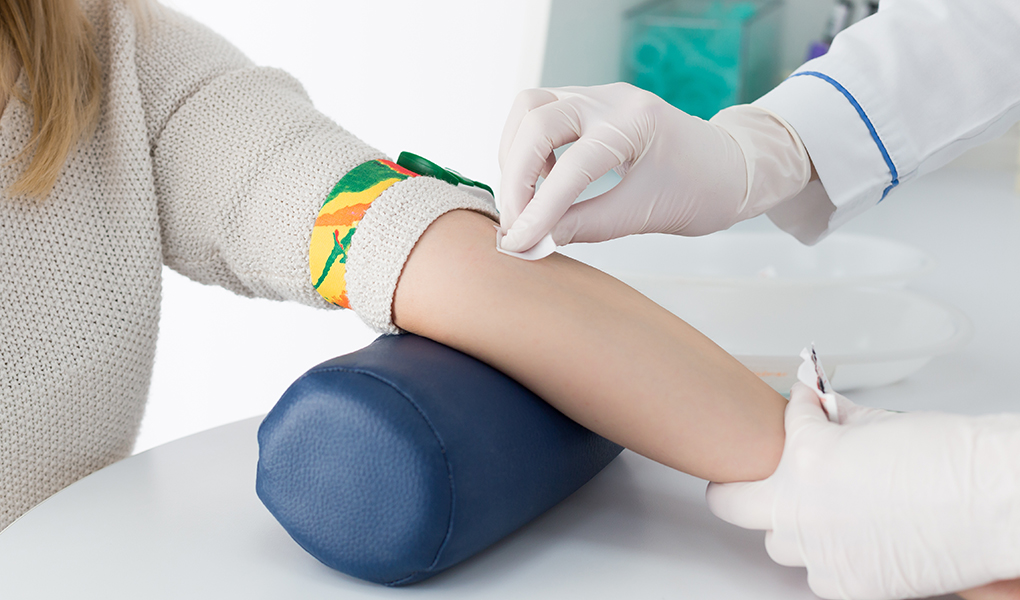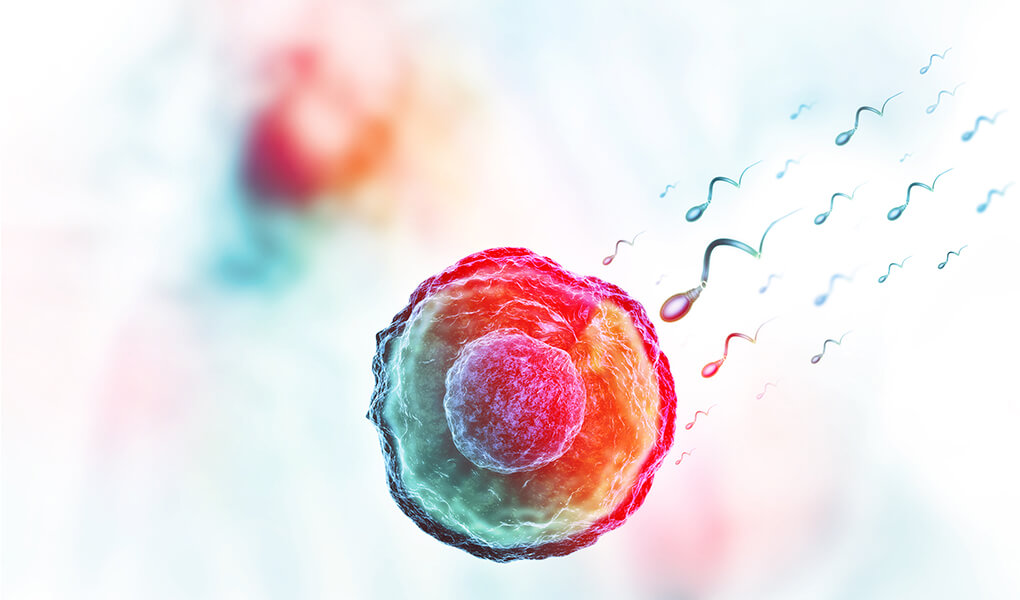Anti Mülleran Hormone (AMH), a type of glycoprotein, is found in both men and women. After the fertilization of egg and sperm, in other word in pregnancy, anti-mullerian hormone is secreted from the sertoli cells in the testicles if the foetus is male, and the development of female reproductive organs such as vagina and uterus is prevented. Since females do not have testicular tissue, AMH secretion does not occur and the mullar canal develops to form reproductive organs such as uterus, fallopian tubes and vagina is provided. Thanks to secretion of AMH hormone, the uterus and vagina are formed only in women and gender confusion does not occur. AMH is secreted in women by the vesicle containing the follicle cells (ovarian granulosa).
The release of AMH in female babies in the womb begins immediately before birth, at the 36th week of pregnancy and continues to be secreted until the menopause period, which will appear many years after birth. It is effective in the selection of spermatogenesis in men, namely sperm production, anti-mullerian hormone and in women, in the selection of egg follicles. It plays a role in determining which of the preantral follicles in which the eggs in the ovarian reserve are located will mature and turn into an antral follicle. In a simpler way, the anti-mullerian hormone determines which egg, how fast it will mature in women. The AMH test is a laboratory test that allows this hormone level to be measured. Frequently asked the question “What is the AMH test?” It is necessary to answer the question.
What is AMH Test?
Unlike men, women cannot produce eggs, which are reproductive cells in their bodies. However, she is born with the highest capacity of eggs. This is defined as the ovarian reserve, eggs are located inside the vesicles called follicles. Every month, a certain amount of eggs matures in the menstrual cycle, and the healthiest of these eggs is thrown into the fallopian tubes where fertilization will take place. The AMH hormone is produced in women by granulosa cells located in the egg follicles. The secreted anti-mullerian hormone determines which egg will develop at what speed. There is a direct relationship between the level of AMH in the blood and the number of eggs in the ovarian reserve. The AMH level does not change during the day or differ from month to month. It is not affected by the level of oestrogen in the blood. However, the AMH level decreases slowly by aging.
Low level of AMH indicates that the menopause period is approaching. Therefore, those who take AMH test may have information about reproductive health. This is the reason why the egg reserve test is called AMH among the public. AMH test, measures the level of anti-mullerian hormone, which is extremely important for women of reproductive age, it provides important information about the status of the ovarian reserve. In other words, in the assessment of fertility, although it does not give clear information about when the person will enter menopause period. Frequently asked question is “What should be the AMH test result?” Before answering the question, it is necessary to answer in what situations the AMH test is performed.
Why AMH Test Applied?
The AMH test is applied to determine the ovarian reserve of a woman. It has an important role in the investigation of the egg production capacity and ovarian reserve required for conception. Anti-mullerian hormone test also provides information about the success rate of reproductive treatment methods such as IVF. AMH test, which contains much more reliable results than oestrogen, inhibin-B and FSH hormones, aims to clarify early menopause cases, primarily to investigate ovarian reserve, to diagnose menopausal age, to understand ovarian damage, to detect ovarian problems.
In addition to these, the diagnosis of early or late adolescence can be made for the determination of the risk of ovarian hyperstimulation syndrome (OHSS) due to infertility treatment and the detection of ovarian tumours. Unlike FSH, which is secreted from the pituitary gland in the brain, AMH is secreted directly from the ovary. Therefore, AMH test is mostly performed instead of FSH today in evaluating ovarian functions and making IVF decision. Before explaining the interpretation of the AMH test result, “How is the AMH test done?” It is necessary to answer the question.
How is AMH Test is Applied?
Like many other hormone tests, the anti-mullerian hormone test is applied in a laboratory environment. Patient does not need to be in the menstrual period to perform the AMH test. The only condition for successful AMH testing is fasting. 1 ml for the test made from blood. serum is enough. Although the test performed from the blood drawn through the vein is easy, the interpretation of the test requires special equipment. Many people who want to have an AMH test ask, “Where is the AMH test done?” asks the question. The physician should be consulted about where the AMH test can be performed if it is not part of the routine fertility tests.
Result of the AMH Test
The anti-mullerian hormone test is applied to investigate and determine the egg production capacity and egg reserve required to conceive. AMH test is also used to determine the most correct treatment type for the physician during IVF treatment, which is one of the reproductive treatment types. The AMH test, which allows consistent values throughout the menstrual cycle, is often used to measure the ovarian reserve. As a result of the person’s AMH test, it provides information on many subjects for the physician. Thanks to this test, which is an indicator of the reproductive capacity of the person, the physician can inform the people who want to become pregnant in the future about the time period in which they should freeze their eggs.
Understanding the in vitro fertilization (IVF) cycle value is helpful in determining whether follicle-stimulating medication or egg preservation is appropriate. The very high level of AMH test results is important for the diagnosis of polycystic ovary syndrome (PCOS).
In PCOS disease, the AMH level is 2 to 3 times higher than the normal value. The high AMH level in the disease, which is characterized by menstrual irregularity and ovulation disorders, is due to the high number of egg cells associated with PCOS. Low AMH indicates that the ovarian reserve is decreasing. It is the herald that the menopause period is approaching. It is not possible to raise the level of AMH with medication or in different ways. Since the level of AMH is also indicative of decreased fertility, it may be suggested that people planning pregnancy should benefit from reproductive treatment methods if they encounter low AMH levels. One of the frequently asked questions in this process is “What should be the AMH test?” It shaped.
What is the Ideal Level of AMH Hormone?
The anti-mullerian hormone, which plays a role in the differentiation of tissues, is made from blood. While the level of hormones falling in men after birth rises again after 3 to 6 months, in women, it is found at a high level from the mother’s womb. In pre-adolescent childhood and infancy, AMH level is around 50 ng / ml. AMH, which decreases slightly before puberty, is 1.5 to 4 ng / ml throughout life in adolescence. “What should be the AMH values by age?” The question can be answered in this way.
The AMH hormone level, which remains at 1.5 to 4 ng / ml until menopause, is almost the same in men and women. AMH value above 4 ng / ml level, high AMH, 1.5 to 4 ng / ml anti-mullerian hormone range normal AMH, below 1.5 ng / ml low AMH, and lower than 0.5 ng / ml represent very low AMH value. These values are also directly proportional to the fertility of the person. AMH test price may differ according to the technical competence of the health institution where the test is performed and the experience of physicians.
If you are considering having an AMH test, you can contact us at 444 39 49 for all your questions about the test. We wish you healthy days.










Be the first to comment